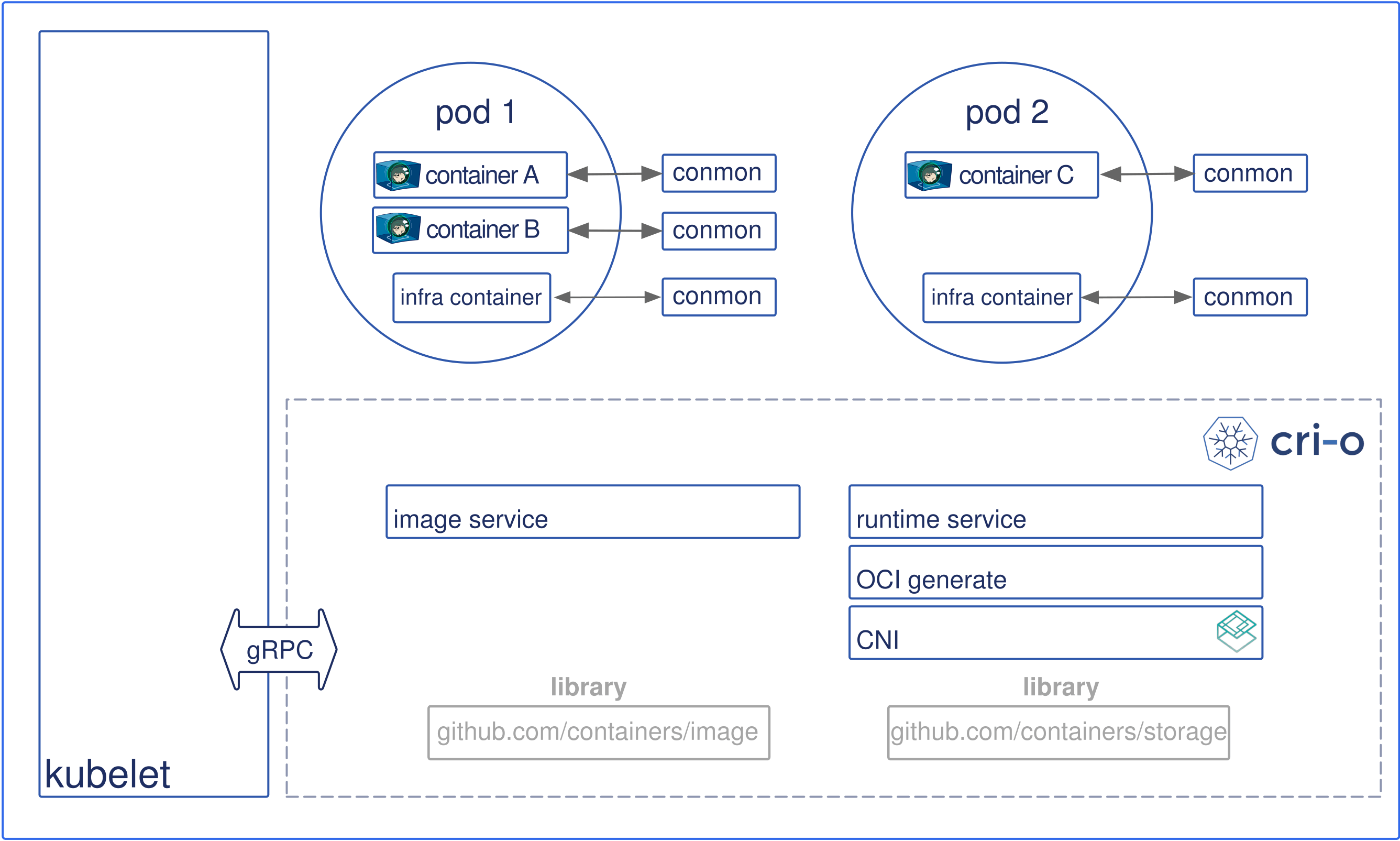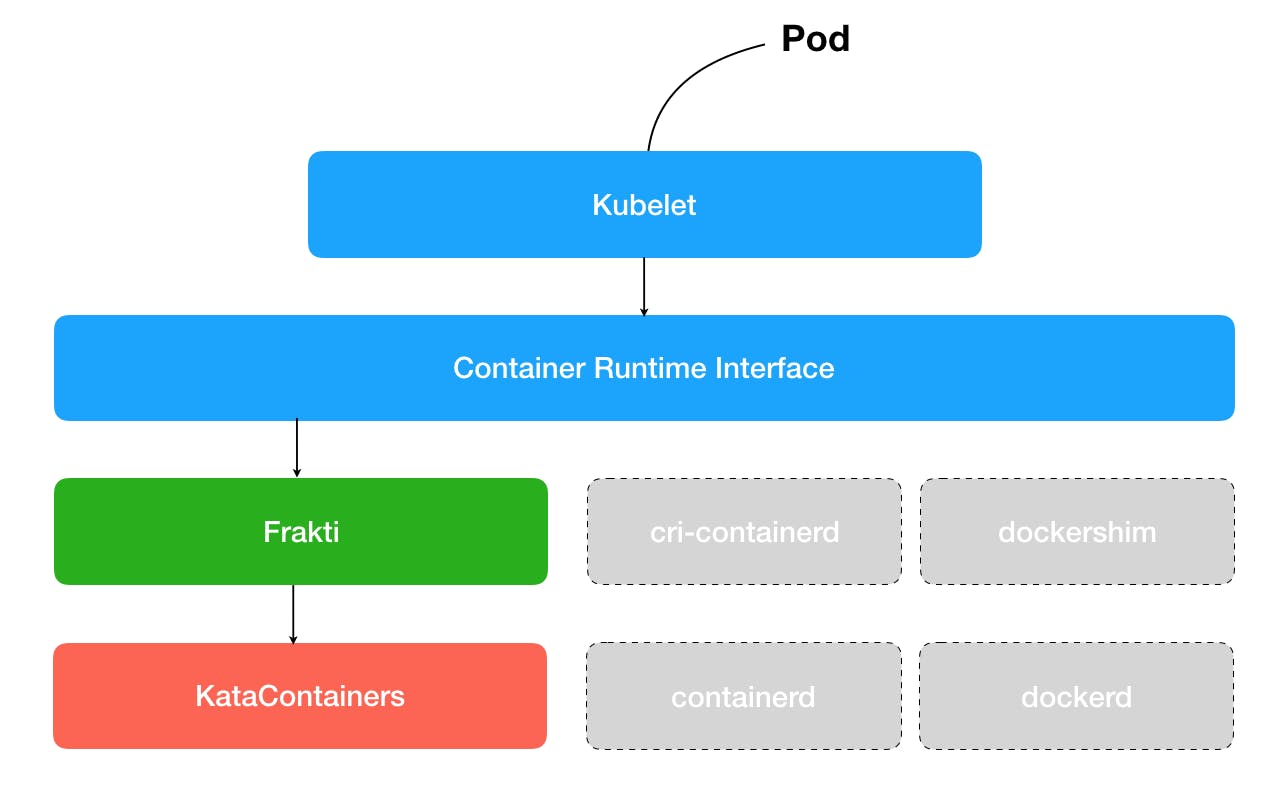
A worker node provides a running environment for client applications. Though containerized microservices, these applications are encapsulated in Pods, controlled by the cluster control plane agents running on the master node. Pods are scheduled on worker nodes, where they find required compute, memory and storage resources to run, and networking to talk to each other and the outside world. A Pod is the smallest scheduling unit in Kubernetes. It is a logical collection of one or more containers scheduled together, and the collection can be started, stopped, or rescheduled as a single unit of work.
Also, in a multi-worker Kubernetes cluster, the network traffic between client users and the containerized applications deployed in Pods is handled directly by the worker nodes, and is not routed through the master node.
Worker Node Components
A worker node has the following components:
- Container Runtime
- Node Agent - kubelet
- Proxy - kube-proxy
- Addons for DNS, Dashboard user interface, cluster-level monitoring and logging.
Worker Node Components: Container Runtime
Although Kubernetes is described as a "container orchestration engine", it does not have the capability to directly handle containers. In order to manage a container's lifecycle, Kubernetes requires a container runtime on the node where a Pod and its containers are to be scheduled. Kubernetes supports many container runtimes:
- Docker - although a container platform which uses containerd as a container runtime, it is the most popular container runtime used with Kubernetes
- CRI-O - a lightweight container runtime for Kubernetes, it also supports Docker image registries
- containerd - a simple and portable container runtime providing robustness
- frakti - a hypervisor-based container runtime for Kubernetes
Worker Node Components: Node Agent - kubelet
The kubelet is an agent running on each node and communicates with the control plane components from the master node. It receives Pod definitions, primarily from the API Server, and interacts with the container runtime on the node to run containers associated with the Pod. It also monitors the health and resources of Pods running containers.
The kubelet connects to container runtimes though a plugin based interface - the Container Runtime Interface (CRI). The CRI consists of protocol buffers, gRPC API, libraries, and additional specifications and tools that are currently under development. In order to connect to interchangeable container runtimes, kubelet uses a shim application which provides a clear abstraction layer between kubelet and the container runtime.

As shown above, the kubelet acting as grpc client connects to the CRI shim acting as grpc server to perform container and image operations. The CRI implements two services: ImageService and RuntimeService. The ImageService is responsible for all the image-related operations, while the RuntimeService is responsible for all the Pod and container-related operations.
Container runtimes used to be hard-coded into kubelet, but since the CRI was introduced, Kubernetes has become more flexible to use different container runtimes without the need to recompile. Any container runtime that implements the CRI can be used by Kubernetes to manage Pods, containers, and container images.
Worker Node Components: kubelet - CRI shims
Shims are CRI implementations, or interfaces, specific to each container runtime supported by Kubernetes. Below we present some examples of CRI shims:
- dockershim With dockershim, containers are created using Docker installed on the worker nodes. Internally, Docker uses containerd to create and manage containers:

- cri-containerd With cri-containerd, we can directly use containerd to create and manage containers:

- CRI-O CRI-O enables the use of any Open Container Initiative (OCI) compatible runtime with Kubernetes. At the time this course was created, CRI-O supported runC and Clear Containers as container runtimes. However, in principle, any OCI-compliant runtime can be plugged-in

- frakti frakti enables CRI implementation through hardware virtualization, aimed to achieve a higher level of security and isolation than the traditional Linux OS level containers based on cgroups and namespaces. The frakti CRI shim is aimed at enabling kubelet to interact with Kata Containers

Worker Node Components: Proxy - kube-proxy
The kube-proxy is the network agent which runs on each node responsible for dynamic updates and maintenance of all networking rules on the node. It abstracts the details of Pods networking and forwards connection requests to Pods.
The kube-proxy is responsible for TCP, UDP, and SCTP stream forwarding or round-robin forwarding across a set of Pod backends, and it implements forwarding rules defined by users through Service API objects.
Worker Node Components: Addons
Addons are cluster features and functionality not yet available in Kubernetes, therefore implemented through 3rd-party pods and services.
- DNS - cluster DNS is a DNS server required to assign DNS records to Kubernetes objects and resources
- Dashboard - a general purposed web-based user interface for cluster management
- Monitoring - collects cluster-level container metrics and saves them to a central data store
- Logging - collects cluster-level container logs and saves them to a central log store for analysis.
